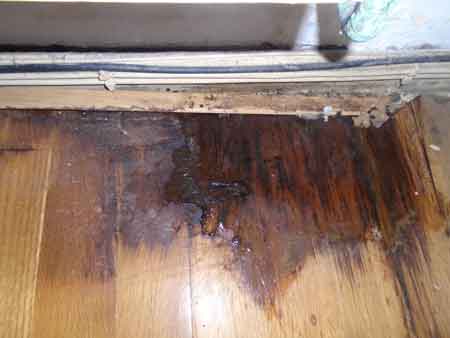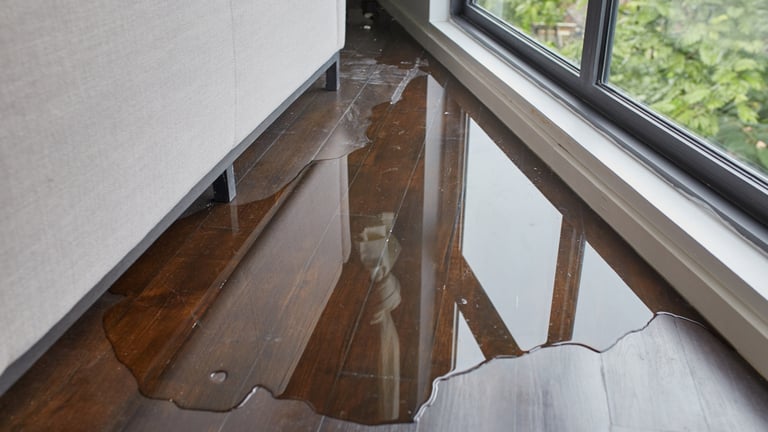Booking Page
They are making a number of great pointers on Hacks to detect leaks overall in this content on the next paragraphs.

Climate modification and also international warming have actually made their mark not just on nations but likewise areas. Once safe areas have experienced more flooding and groundwater invasion contrasted to current years, the. For several homeowners, groundwater breach is already a headache as it breaks through the surface.
Recognizing the indicators is constantly a trick for avoidance and also mitigating water damages as well as groundwater invasion. Groundwater intrusion is one of the worst problems to your residence.
Climbing groundwater is a relentless issue because it causes mold and mildew and also mold growth. It likewise contributes to timber rot, which additionally leads to structural problems. An increased quantity of groundwater makes your house much more prone to flooding. You can still protect against groundwater from harming your beloved house. Here's just how!
Waterproof your Cellar
Water resistant your basement currently and do not wait before it's far too late. This step ought to be a must specifically if you're in a location prone to flooding. Waterproofing should be done prior to the sight of a flooding shows up. The groundwater can damage in with rain and flooding if you don't rush.
To waterproof your basement, load the basement with more concrete to stop any kind of groundwater concerns. Installing concrete and applying waterproofing steps seals your basement as well as shields it from water breach.
Consider Installing a French Drain System
A French drain system includes polypropylene tubes. This kind of drainpipe system aids as a channel, which is lined with concrete. Additionally, they do not look obvious to a stranger's eye because these drains look like a pipe or trench that blends in their environment. The advantage of this system is it safeguards your residence from added troubles as it protects against the water from permeating right into your structure.
Further, this system stops your floors from water flooding. Installing this system safeguards your structure. You will not need to fear key repairs associated with m water damages. The system is extremely easy to install - you conveniently fit as well as replace this type of system anytime.
Buy A Number Of Sump Pumps
Sump pumps are very affordable products as well as are available in equipment shops. The pump's key objective is rerouting the water from inflowing your house. This tool can protect your house from climbing groundwater. A sump pump will provide a layer of protection if you feel distressed regarding groundwater seeping into your cellar. Due to the fact that they are low-cost and also simple to install, lots of individuals choose this. It can additionally increase up your energy expenses.
Install these pumps (and also numerous of them) in your cellar or crawlspace. When mounting, make certain that the tubing is placed into a drainpipe or out onto the street.
Raise the Home Completely
Raising the structures of your residence completely is a long-time as well as efficient option to stop incoming groundwater. The general procedure entails creating a new, higher foundation to raise the home over the flooding area.
Applying these pointers will help safeguard your home and ownerships against water damages. If you tried all of these ideas and still obtained water damage, it's ideal to call in the professionals. Call a water remediation business as soon as possible to help you come back on course.
The as soon as risk-free areas have experienced more flooding as well as groundwater invasion compared to current years. Knowing the indicators is constantly a key for prevention as well as mitigating water damages and also groundwater breach. Groundwater breach is one of the worst problems to your house. To stop groundwater guideline, normal inspection of leakages in your residence and inspect if your cellar is wet. To water resistant your basement, fill the cellar with even more concrete to protect against any kind of groundwater concerns.
How to Restore Hardwood Flooring After Water Damage
How to repair hardwood floor water damage
Wear protective gear such as gloves, rubber boots, and a mask.
Stop the flow of water if the flooding occurred due to a burst pipe, washing machine failure or water heater failure.
Turn off the power to the affected room until the water has been removed.
Assess the damages before you begin the restoration to determine whether to clean up or replace the floor. Take photos, list damaged items, and show them to your insurance company.
Remove any items (carpet, furniture, etc.) from the floor and take them to a dry area.
Open windows and doors to allow moisture to evaporate more quickly.
Start removing the excess water with a wet/dry vacuum cleaner or with mops and old cloth. If the water level is deep, use a pump to drain the water. Ask someone to help so you can finish the task faster and avoid further damage.
Use dehumidifiers, heaters, and fans to speed up the drying process. Place them on top of an elevated surface in the flooded area and close the windows. Direct the fans towards the floor s surface.
Clean any debris and mud from the floor with a non-abrasive brush and detergent while the heaters, fans, and dehumidifiers are running. Rinse the floor with clean water and continue to dry the floor.Determining the type of flooring and installation
Inspection is always crucial when starting to repair hardwood floor water damage. Hardwood flooring comes in a variety of species, such as oak, pine, maple, and cherry. More and more exotic species are being used in flooring. Every type poses different challenges in the drying process because of the varying levels of moisture absorption.
There are also varieties of flooring that look like wood but are not. These floors will sometimes have a laminate on the surface and a particle board substructure. When moisture seeps beneath these floors, drying is nearly impossible. The inability to dry these surfaces is due to moisture being trapped under the laminate, which acts as a vapor barrier. For more help, call a PuroClean water damage restoration professional to help you evaluate your flooring s type and condition.
Professionals will also assess the initial installation method of the hardwood flooring. Original installation may be nailed, glued or installed in a floating method.
When nailed floors have suffered from water damage, the nails may lift.
If the floor has been glued onto the substrate, the moisture may release the glue.
In the case of a floating type floor, it may not be true wood and may be a laminated product. Tongue and groove hardwood flooring may cup after absorbing moisture.Drying the hardwood floor (patience is key)
Once the technicians determine the wood floor type and installation method, drying can begin. Using surface and/or subsurface drying methods and proper dehumidification, technicians can force airflow beneath the surface of the floor (in a positive or negative manner) to remove this moisture. It may also be necessary to access the floor from below for faster drying.
Effective drying of a hardwood floor is a slow process. It will sometimes take seven to 10 days for the floor to release enough water to halt the forced drying process. Removing all the absorbed water from the floor is expensive and nature must be allowed to assist in the process.
The hardwood drying continues until the wood s moisture levels reach four percent of the floor s dry standard. At this point, nature will remove the remaining water, although slowly anywhere from three to six months. Education in this process is crucial for a successful job. Let the restorations professionals of PuroClean help you dry your hardwood flooring properly.
Repairing the finish
Once the hardwood floor is dry, there may still be damage to the floor finish. Finishes, such as waxes and polyurethane, may inhibit the evaporation of the absorbed moisture. They will sometimes have to be removed in the drying process to allow for moisture removal.
If the hardwood floor cups slightly, the finish may check and crack due to the movement of the wood product. This is a normal part of the drying process. Once the floor is completely dry, the floor can be refinished.
Hardwood floor drying is a specialty. PuroClean restoration professionals have the knowledge to properly evaluate the many types of floors and have specialized equipment to repair hardwood floor water damage.
https://www.puroclean.com/blog/what-should-i-consider-after-a-wood-floor-is-flooded/

Hopefully you enjoyed our section on Detecting hidden plumbing leaks. Thank you for spending some time to read our content. Enjoyed our write up? Please share it. Help somebody else check it out. Thank-you for going through it.
Trusted plumbing emergency service awaits.